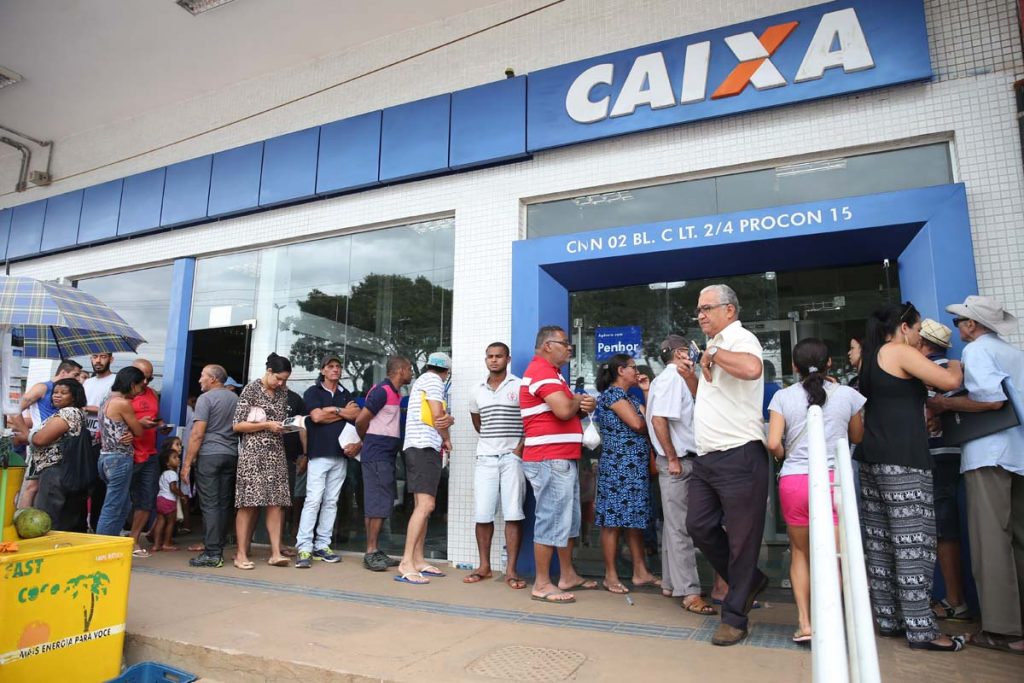RIO DE JANEIRO, BRAZIL – The novel coronavirus pandemic exposed Brazil’s deep geographic and socioeconomic inequalities. The economy, which was no longer performing well, stagnated once and for all, thus rendering the emergency aid paid by the federal government the only source of income for many families.
In July, roughly half of the country’s households (just over 30 million, or 44 percent) were receiving some kind of benefit, according to the National Household Sample Survey (PNAD), conducted by the Brazilian Institute of Geography and Statistics (IBGE) and released on Thursday, August 20th. In June this number stood at 43 percent. But the magnitude of the social abyss becomes clear when analyzing the situation in the different regions of the country.
The North and Northeast represent the highest proportion of homes that rely on emergency aid: 60.6 and 59.6 percent of homes in these regions, respectively, have some member who receives the monthly R$600 (US$120) paid by the government.

There, the highest rate of casual workers in Brazil was also recorded by PNAD, with 48 and 44 percent of the economically active population in the North and Northeast in precarious labor situations (compared to 33 percent of the national average and 24 percent in the South).
Historically neglected by federal governments, the states in these two regions have the highest proportions of households served by the aid program. Amapá (68.8 percent), Maranhão (65.8 percent), Pará (64.5 percent), Alagoas (62.8 percent) and Amazonas (62.6 percent) are the most dependent on the aid.
All other states in the North and Northeast regions – except Rondônia (48.5 percent) – report over half of all households receiving the emergency relief. It is estimated that of each R$3 paid in aid by the government, R$1 goes to the Northeast. The states in other regions were below 50 percent of beneficiary households, with Rio Grande do Sul (29.6 percent) and Santa Catarina (24.5 percent) with the lowest proportions, according to PNAD data.
Now, with an eye on 2022, President Jair Bolsonaro is surfing the popularity wave partly prompted by this benefit and has made a point of including several inaugurations in cities in the North and Northeast in his official agenda. The latest Datafolha Institute survey, released on August 13th, showed that 37 percent of Brazilians consider his government excellent or good. In June this number stood at 32 percent.
Bolsonaro’s best performance was in the Northeast, the region with the highest number of aid recipients: there, rejection of his mandate fell from 52 to 35 percent. These R$600 payments have a outsized weight in the domestic economy of millions of Brazilians impoverished by the crisis, particularly in regions where living costs are lower. For the sake of comparison, the average benefit paid by the Bolsa Família (Family Grant) is R$189 per family, according to data from Congress.
To date, this has been the government’s only public policy for reducing poverty and hunger. However, at the start of the health crisis, the President was not thrilled about the benefit: with the public accounts at their limit, a liberal minister of economy, and fearing a potential impeachment process for breaking the spending ceiling, he would not allow the amount to exceed R$200.
Seeing that he would be defeated in Congress, he agreed to three installments of R$600, which should now be extended until the end of the year. In total, the program has already distributed R$167 billion through the start of August, or approximately 60 percent of the total amount allocated by the Government to tackle the coronavirus.
But the Northeast has not always relied on Bolsonaro’s help. In early March, before the pandemic, the government prioritized the South and Southeast regions with the granting of new Bolsa Família benefits to the detriment of the Northeast, according to a report in the newspaper O Estado de São Paulo.
Of the total number of new beneficiaries, 75 percent were from the South and Southeast, compared to three percent from the Northeast, a region that is home to nearly 37 percent of families in poverty or extreme poverty and who are waiting for the benefit to be granted.
In addition, Bolsonaro’s career in the Chamber of Deputies is fraught with incidents in which he has shown prejudice towards the Bolsa Família beneficiaries, who he has already called “ignorant” and “measly”. In 2011 he even advocated the end of the program and stated that its maintenance ensured a “dictatorship of the proletariat” in the country.
The then deputy’s criticism adds weight to a long-held anti-PT (Worker’s Party) theory, according to which Lula’s party succeeded in holding office for four consecutive terms thanks to the income distribution program. Once elected president, Bolsonaro tempered his speech, and when he announced the extension of the Bolsa Família he referred to it as “a great achievement for those who need it so much and have been forgotten for a long time”.
Source: El País

